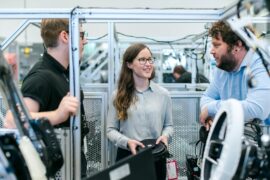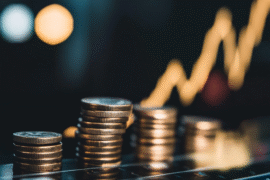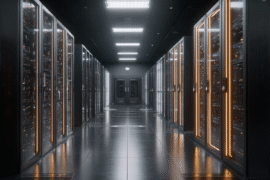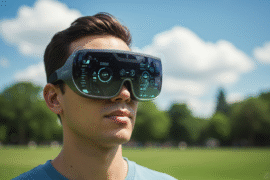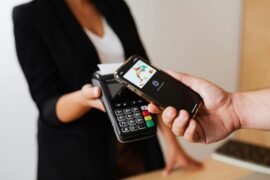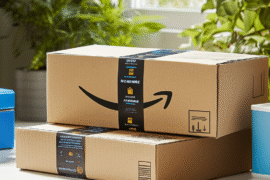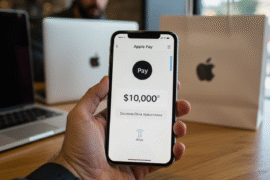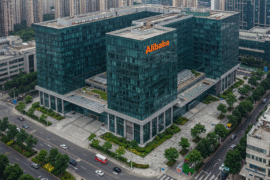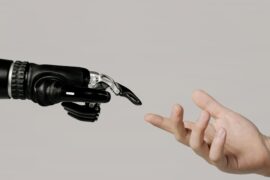This article may contain references to products or services from one or more of our advertisers or partners. We may receive compensation when you click on links to those products or services. Nonetheless, our opinions are our own.
In the digital era, the retail landscape is undergoing a profound transformation. Technology has transcended its role as a mere adjunct to become a cornerstone of the retail customer experience. This shift is reshaping how consumers interact with brands, turning shopping into an integrated, technology-driven journey.
From browsing to purchasing, technology is not just enhancing but fundamentally reinventing the retail experience, setting new standards for customer engagement and satisfaction in an ever-evolving marketplace.
The Role of Technology in Retail Efficiency and Customer Satisfaction
The integration of technology in retail has revolutionized both operational efficiency and customer satisfaction. For instance, advanced inventory management systems, powered by AI and machine learning, are enabling retailers to predict demand, optimize stock levels, and reduce overstock and understock scenarios. This precision in inventory management not only streamlines operations but also ensures that customers find what they need when they need it.
In the realm of customer interaction, technologies like interactive kiosks and mobile apps are reshaping the shopping experience. These tools provide customers with easy access to product information, personalized recommendations, and expedited checkout processes. For example, mobile apps with integrated barcode scanners allow customers to quickly get product details and reviews while shopping in-store, enhancing their decision-making process.
Moreover, the adoption of contactless payment systems and self-checkout stations has significantly reduced queue times, offering a more convenient and swift shopping experience. These technologies not only cater to the customer’s desire for speed and convenience but also streamline store operations, leading to increased customer throughput and reduced operational costs.
In summary, technology in retail is not just about automating processes; it’s about creating a seamless, efficient, and satisfying shopping experience that meets the modern consumer’s expectations.
Retail Technologies That Enhance Customer Experience
In the quest to enhance the shopping experience, several key technologies stand out for their impact and innovation. EFTPOS machines, for example, have revolutionized the checkout process. They offer a quick, secure, and convenient way for customers to complete transactions. Smartpay EFTPOS terminals, in particular, exemplify this technology’s ability to streamline payment processes, offering features like contactless payments and integration with various point-of-sale systems.
Mobile payments have also transformed the retail landscape. They allow customers to make purchases with just a few taps on their smartphones, blending convenience with speed. This technology caters to the modern consumer’s preference for quick and hassle-free transactions, enhancing the overall shopping experience.
Blockchain technology is another innovator in the retail sector. It brings transparency and security, particularly in supply chain management. Customers can trace the origin and journey of products, fostering trust and confidence in the brand. This level of transparency is particularly appealing to the ethically conscious consumer, who values insight into product sourcing and authenticity.
Each of these technologies contributes uniquely to improving the retail experience, from streamlining transactions to building customer trust and satisfaction.
Balancing Automation and Customer Empathy in Retail
In the pursuit of efficiency, retail faces the challenge of balancing automation with genuine customer empathy. Harvard Business Review introduces the concept of “engineered insincerity,” where automation can sometimes create a facade of personalization.
To avoid this, retailers must ensure that their automated systems are designed with a deep understanding of customer needs. This involves using technology not just to expedite processes but to enrich customer interactions with meaningful, personalized experiences. By doing so, retailers can maintain the human touch in digital interactions, ensuring that automation enhances rather than detracts from the customer experience.
Conclusion: The Future of Retail in the Age of Technology
As we navigate the evolving landscape of retail, it’s clear that technology is not just a tool but a transformative force. From enhancing efficiency with EFTPOS machines to personalising experiences through data analytics, technology is reshaping the way we shop and interact with brands. Looking ahead, the future of retail lies in the seamless integration of technology with a deep understanding of customer needs, ensuring that every innovation enhances the shopping experience.
In this age of technology, the retailers who thrive will be those who use these advancements to forge stronger, more empathetic connections with their customers.

Reviewed and edited by Albert Fang.
See a typo or want to suggest an edit/revision to the content? Use the contact us form to provide feedback.
At FangWallet, we value editorial integrity and open collaboration in curating quality content for readers to enjoy. Much appreciated for the assist.
Did you like our article and find it insightful? We encourage sharing the article link with family and friends to benefit as well - better yet, sharing on social media. Thank you for the support! 🍉
Article Title: Enhancing Retail with Technology: Improving Customer Experience in Stores
https://fangwallet.com/2023/12/20/enhancing-retail-with-technology-improving-customer-experience-in-stores/The FangWallet Promise
FangWallet is an editorially independent resource - founded on breaking down challenging financial concepts for anyone to understand since 2014. While we adhere to editorial integrity, note that this post may contain references to products from our partners.
The FangWallet promise is always to have your best interest in mind and be transparent and honest about the financial picture.
Become an Insider

Subscribe to get a free daily budget planner printable to help get your money on track!
Make passive money the right way. No spam.
Editorial Disclaimer: The editorial content on this page is not provided by any of the companies mentioned. The opinions expressed here are the author's alone.
The content of this website is for informational purposes only and does not represent investment advice, or an offer or solicitation to buy or sell any security, investment, or product. Investors are encouraged to do their own due diligence, and, if necessary, consult professional advising before making any investment decisions. Investing involves a high degree of risk, and financial losses may occur including the potential loss of principal.
Source Citation References:
+ Inspo






